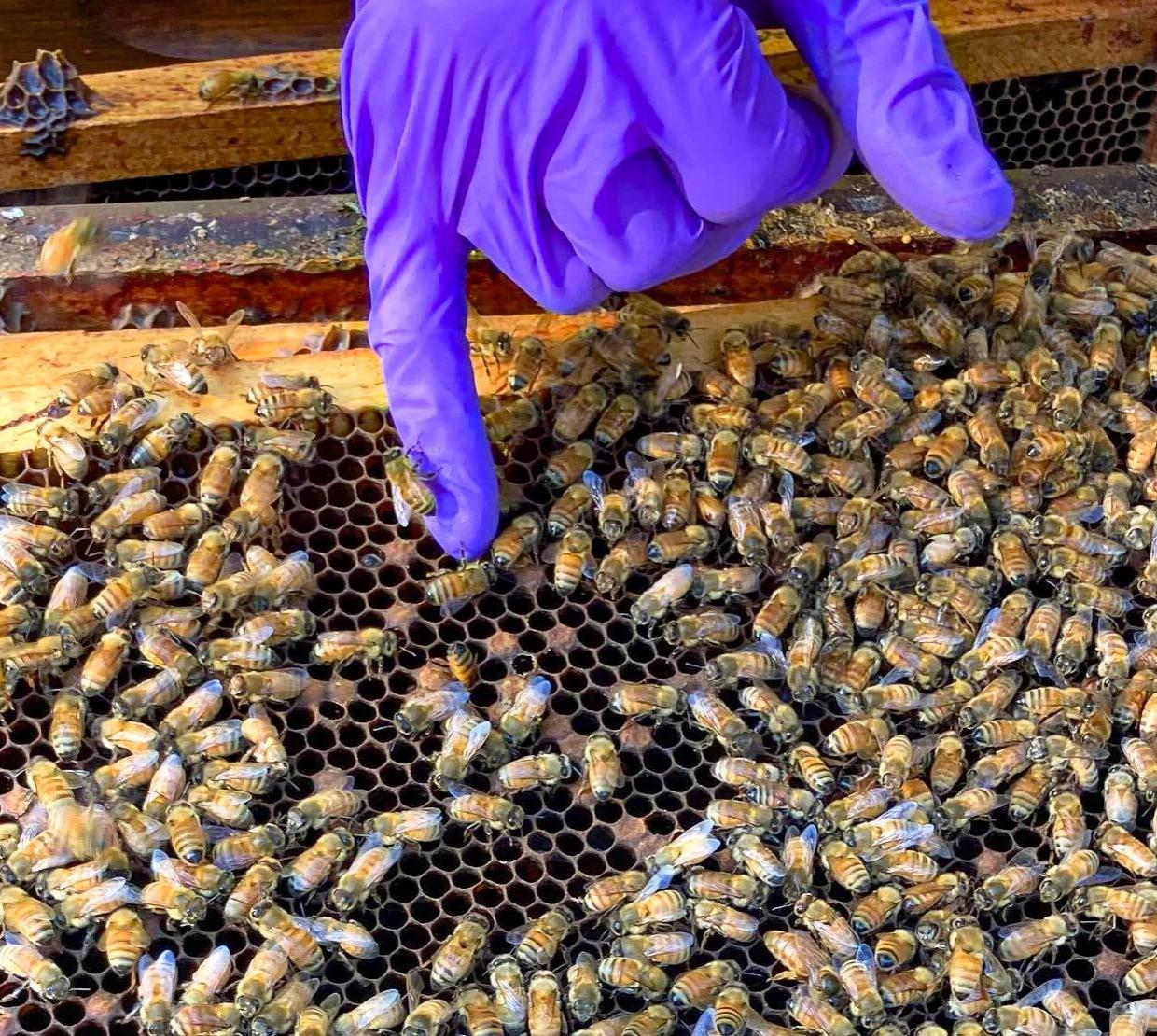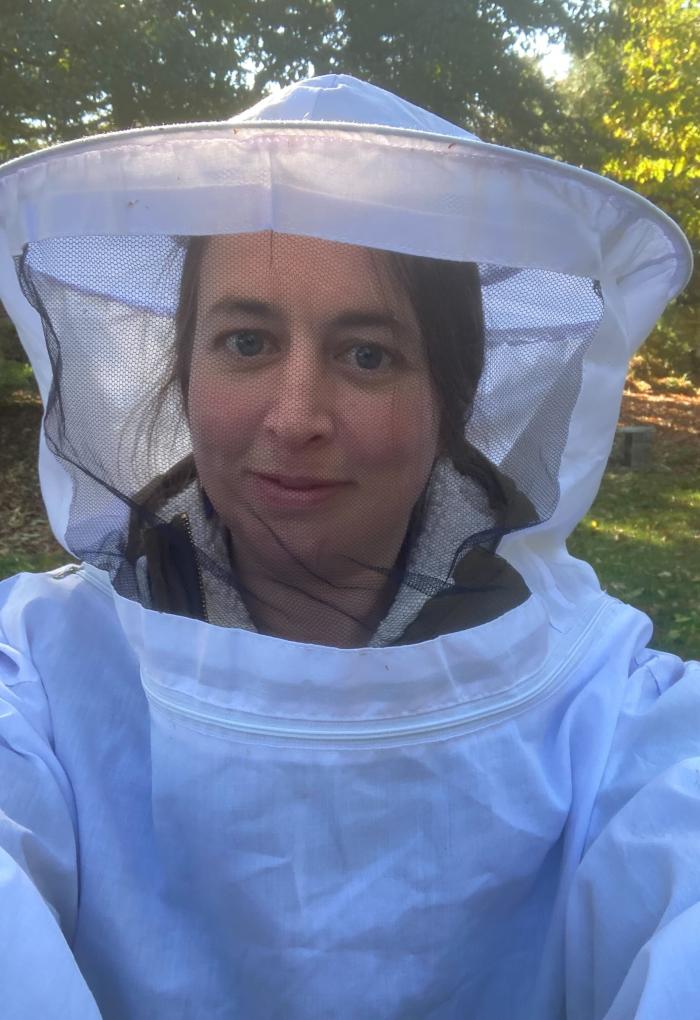From the lab to the field
European foulbrood disease (EFD) targets and kills young larvae before they reach adulthood. After being fed infecting brood food, the larvae turn from pearly white to brown, forming a rubbery scale. The name “foulbrood” refers to the sour, rank and rotting smell that can result from secondary bacterial infections that co-occur.
Beekeepers in Oregon on average pollinate about five different crops in a year. If the colonies are weakened from EFD this means less pollination, worrying blueberry and almond growers.
Oregon grew 158 million pounds of blueberries in 2022, ranking it in the top 10 producing states in the U.S., according to the U.S. Department of Agriculture Statistics Service. Researching how to keep hives safe has become a priority for local scientists.
Transitioning from studying the gut-brain axis in humans to the gut microbiota of honey bees, wasn’t a huge challenge for David. Her main research interest focuses on understanding how microbes can impact our behavior, specifically in Autism Spectrum Disorder and Anxiety.
The human microbiota is highly complex. Honey bees, on the other hand, are the opposite.
“The microbiology part is normal. I’ve done that before. What I love about bees is that you could say the gut microbiota could be considered a lot simpler than the human ones. And that makes it fun because you can study this a little bit more in-depth. It’s an ideal system to study,” David said.
A passionate Ph.D. student roped her into the world of bees and led her to Ramesh Sagili, a professor in the Department of Horticulture and EFD project director.
The agent of EFD is an anaerobic bacteria, meaning it does not grow well when oxygen is present. In humans, these bacteria are most commonly found in the gastrointestinal tract. The research team needed someone who could grow anaerobic bacteria in the lab – something David is familiar with.
“This project is very transdisciplinary. There are people who monitor the bee houses in the field and people like me who are more on the microbiology side of things. There is also an economist on the project,” she said. “I could tell you a lot about the bacteria, I could study this genome well, but I really need the field researchers who collect the data and provide a comprehensive story about the field samplings.”
The four-year project has several components. Researchers will follow honey bee hives as they are transported by commercial beekeepers to pollinate almonds and then blueberries across Washington, Oregon, California and Mississippi. They’ll tag more than 1,500 hives for ongoing observation, which includes checking the frames for signs of foulbrood, estimating colony populations and surveying the microbiota of bees and larvae–the last step is where David comes in.
"As a public land-grant university, we need to build this project and respond to the needs of people in the state.”
Researchers have more questions than answers about European foulbrood disease. How does the disease survive between outbreaks? Does it hibernate in the hive? How does each genetic variation differ? What are the best mitigation strategies?
"Of course, because it’s a bacteria, people try to pour antibiotics to treat it. But, as we all know: one, the bacteria is likely to eventually be resistant and two, it’s not great for everything else around it," David said.
The second and third year of the project will be focused on mitigation strategies. David and her collaborator will be testing a new novel probiotic that has shown promise for tackling EFB in the laboratory. After testing in a controlled environment, they will test the probiotic in the field.
Understanding the genetic variation of the disease is important because pinpointing if a specific strain can better survive winter, develop first, or figuring out which one is the most lethal would help with management.
“Right now, colonies management does not really exist. Our objective is to explain a little bit of everything we are doing to the beekeepers and try to deliver transparent knowledge,” she said.
The team is passionate about connecting with local stakeholders who face an uncertain financial future due to EFB. “It’s important that we keep in touch with the needs of the state. As a public land-grant university, we need to build this project and respond to the needs of people in the state.”





